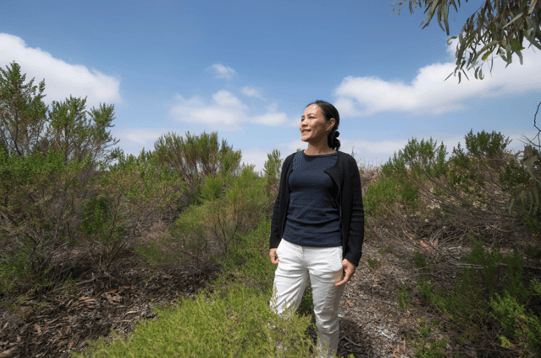By Jun Wu, PhD, Professor of Environmental and Occupational Health
This article was part of the Bridging the Gap Series and was originally published here.

It’s no secret that climate change has been described as the greatest global health threat of the 21st century. This crisis is impacting people in real ways—right now. Extreme heat, more frequent and extreme weather events, and rising sea levels degrade air and water quality, threaten food supplies, and displace millions of people. All these factors contribute to diminished health and well-being for the entire world. On top of this, a long legacy of segregation means people of color and people with low incomes disproportionately bear the impact of climate change. The U.S. Environmental Protection Agency (EPA)’s latest report acknowledges that climate change disproportionately impacts the most vulnerable. As we work to create solutions, it’s critically important to recognize and address how climate change exacerbates social, economic, and health inequities.
As a University of California, Irvine researcher deeply embedded at the intersection of public health and environmental sciences, mine and my colleague’s firsthand experience in this space is why everyone working on climate change should be thinking about health and well-being for all.
Climate change will continue to impact all facets of health, and on its own, is a social determinant of health. The devastation caused by fires, floods, rising temperatures and mass displacement will be catastrophic if we don’t act now.”
– Jun Wu, PhD, Professor of Environmental & Occupational Health
Let’s take for example the current fire season, which has become less seasonal and more year-round, in California has already included four blazes that ranked in the top 20 largest wildfires on record in the state by acreage. My colleague Shahir Masri, an assistant specialist in air pollution exposure assessment in UCI’s Program in Public Health, found that elderly and low-income residents suffered a disproportionate share of the fires’ impacts. In a paper published recently in the International Journal of Environmental Research and Public Health, we found that rural areas, often characterized by higher poverty rates, unemployment, and a greater number of low-income residents, sustained more wildfire damage than other parts of the state. Rural or otherwise, the communities hardest hit by wildfires almost always included higher proportions of elderly residents. As a follow-up study, my team is looking at various factors that impact indoor air quality, such as building characteristics (e.g. house age and type of buildings), that can lead to disproportionate exposure to wildfire air pollutants in sub-populations.
In a collaborative study with colleagues from the University of California, San Diego, my graduate student Yi Sun examined the joint effects of heatwaves, air pollution, and green space on the risk of preterm birth in California using 1.9 million birth certificate records for singleton births (2005–2013). The study found that extreme heatwaves can increase the likelihood of preterm births for those pregnant women living in areas with high air pollution and low green space. The study recommended a series of targeted interventions, such as extreme heat warning systems, reduced outdoor activities, increased cooling zones, especially among women living in high pollution and low green space areas.
Knowing the beneficial health effects of green space in mitigating climate change and air pollution impacts, in a recent study with my fellow researchers at the UCI Program in Public Health and across campus at the UCI Donald Bren School of Information and Computer Sciences, we used machine learning and street view imagery to examine the types of green space (e.g. tree, low-lying vegetation, grass) in Los Angeles County as well as the socio-economic disparities of green space exposure. We discovered that in Los Angeles County, disadvantaged communities had substantively less street green space. We hope that this work will encourage governments and urban planners to consider the role of the type and coverage of green space in reducing health disparity and promoting better well-being.
In an ongoing research study supported by the Solutions that Scale at UCI, our team examines how climate adaptation factors (e.g. green space especially tree canopy, surface reflectance, and air conditioning use) can modify the heat impact on pregnancy outcomes in Southern California subpopulations. Our research will provide empirical evidence for policy makers to direct interventions for climate change related health issues.
I’ve dedicated my career to studying risks to public health and speaking on behalf of my colleagues, public health has a critical role to play on the front lines addressing those health impacts. Literally and figuratively, “bridging the gap” between disciplines will allow us to collectively tackle the day’s pressing issues and devise and implement solutions to help those most in need.
By working hand-in-hand with diverse stakeholders and experts, we can develop strategies and solutions that address climate change, reduce health disparities, and maximize health benefits.
